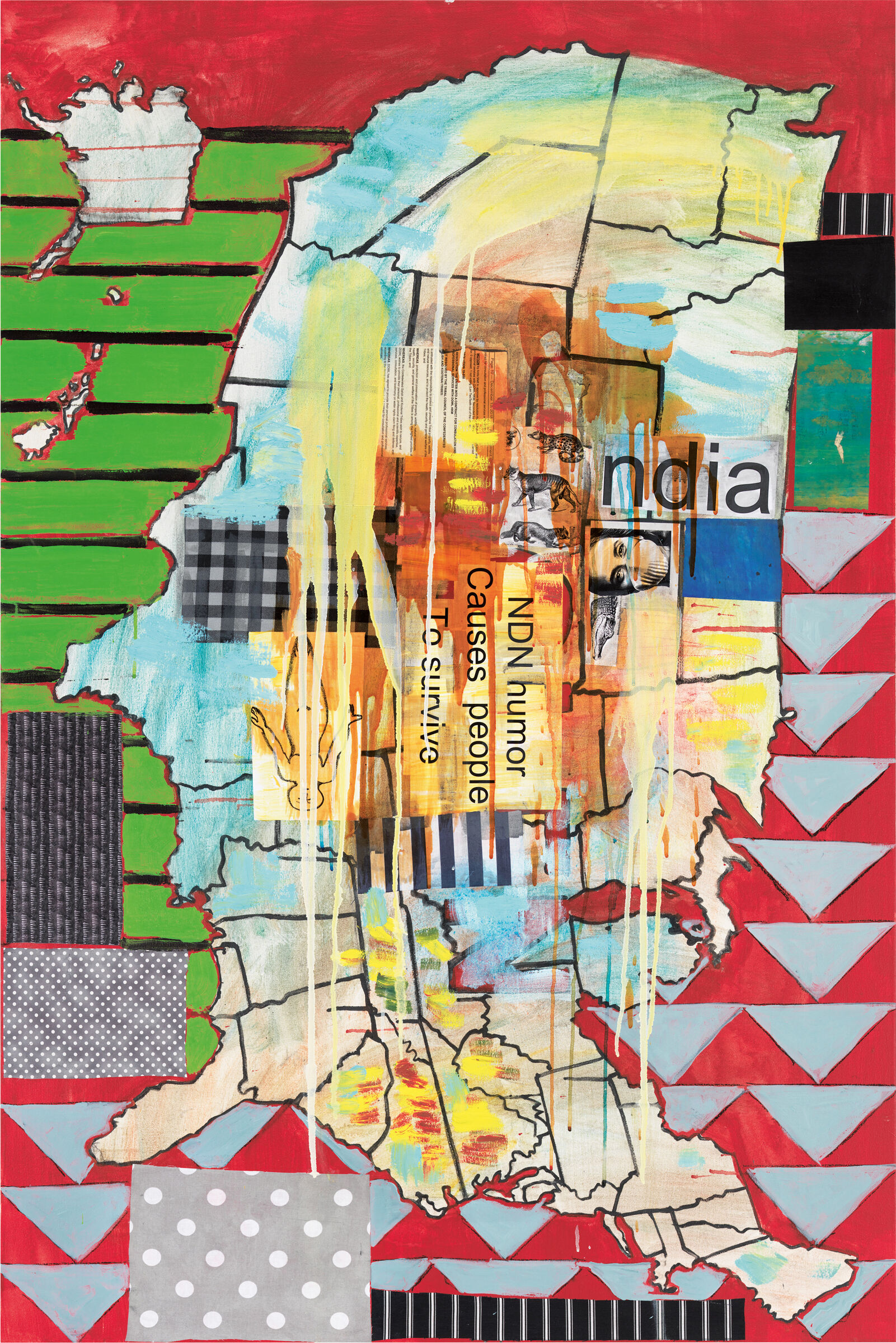Flathead Dress: Women Who Run with the Wolves, 1998
Mar 28, 2023
0:00
Flathead Dress: Women Who Run with the Wolves, 1998
0:00
Narrator: Throughout her career, Smith has used traditional Native dresses as stand-ins for the power of Native women.
Jeffrey Gibson: One of the things I think that people don't understand maybe about regalia and the clothing that Indigenous people wear is that it's oftentimes completely unique to the owner.
Narrator: Artist Jeffrey Gibson.
Jeffrey Gibson: It's something that oftentimes has either been made by the person or made by their family or their community for them.
Narrator: Smith has collaged the dress with language and images, which together point to the complexity of modern Native communities.
Jeffrey Gibson: I noticed in some of the paintings from this time period, headlines from news from Indian Country, which is always interesting to me, that there is an alternative media that has existed for a long time within Native communities, and the perspective of those articles is different.
She also includes twentieth century, I guess I would call them racist imagery, propaganda being made of characters of what it means to be American Indian from that century. I think what Jaune really did that she didn't protect the image of being Native. She kind of reflected these conflicting layers of what the identity of being Native had become by the 1990s.
So we were no longer just living in Indian land, living traditionally in any way. Many people talked about living in between worlds. What she presents is that as one world. It's one world full of conflicting images. There's no rest you know in Jaune's world. There are, of course, other paintings where I feel like through cultural practice and traditional practice, you are able to exist spiritually in another world. But there's also the very material grounded world which is difficult and filled with pain and trauma and racism, and I feel like Jaune's work just sort of flattens that into one space.


